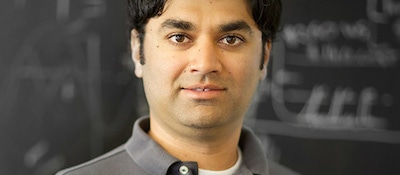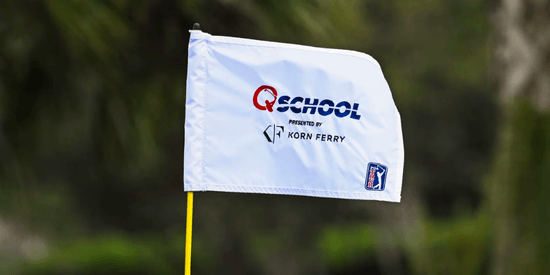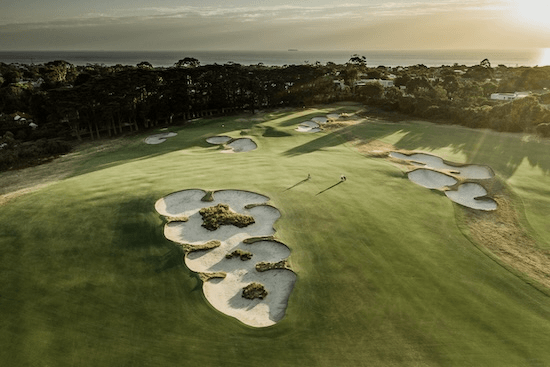A Q&A with Arccos Golf Co-Founder Sal Syed
8/18/2015 | by
see also: Equipment Reviews

HP Matter (Hewlett Packard's cloud and tech publication) found out how disruptive tech can gain traction in traditional spaces
The “modern” game of golf dates back to at least the 15th century. But despite its deep traditions, the sport has welcomed innovation time and again. From the adoption of titanium clubs to the early use of GPS to measure yardage, golf has embraced transformative technologies while largely remaining true to its roots.
For Sal Syed, the 33-year-old CEO of Arccos Golf—a real-time, tee-to-green tracking app for duffers and pros alike—parsing the enormous data associated with every drive, chip and putt is more than a technical feat: It’s the future of the game. Syed recently spoke with HP Matter about how being a golf-history buff has informed his career; why technology like Arccos appeals to all demographics, not just younger players; and the challenge of managing data overload.
Q: Arccos uses GPS and Bluetooth to produce data on a player’s every shot and then relays information to his smartphone. But this involves attaching a sensor to the club itself, to the grip end. Aren’t most golfers resistant to that?
A: Actually, they’re not—as long as the technology does what it sets out to do. I consider myself a traditionalist. I love old golf courses, and I respect the history of the game. I’ve also learned that the “latest and greatest” inventions have been applied to golf because golf attracts an educated, intellectual demographic.
One problem we did run into is that we’re a mobile-first company, and there’s still a slight opposition to cell phones on golf courses. Today, that opposition is really a holdover from when cell phones were only for making calls, which, of course, is disruptive. But with Arccos, you set the app and put the phone away, and as soon as you take a shot, that shot’s data gets stored in the cloud. We call it “club to cloud.”
Q: Would Arccos be possible without the cloud?
A: It’s very, very hard to imagine what it would be like without the cloud. When we are giving you your stats and your handicaps—in comparison to millions of other golfers playing out there—at any given point we’re calculating where you rack up against everybody else in the golf universe. Without the cloud, it’s very hard to figure out where everybody else is.
Q: Who is embracing Arccos? Are you finding a generation gap for adopters?
A: Basically, there are two reasons people play golf: to get better at the game and to have fun. We know we’re helping people get better at golf, but we wanted to see if people were actually having more fun. Across our user base—which mirrors the golf demographic as a whole—63 percent of people say that Arccos actually makes them want to play more golf. If you break it down even more, to users under age 40, that number is something like 91 percent. That’s a crazy-high number. So there’s no question that we’re attracting all demographics, and we’re especially exciting to younger players.
But there’s one more element here, and that’s social. Say you just had an awesome birdie, and how you did it, shot by shot, is right there on your phone. You can share all that data socially. Maybe that kind of excitement and immediacy is the reason younger users find that this adds to the golf experience.
Q: How does Arccos help improve your game?
A: We have all this data from every single swing of the club, so we can unlock what we call your golf DNA. We give you a handicap for each facet of your game. You might be a 20 handicap in driving and a five in approach and a two in putting, so now you know with certainty that your biggest weakness is driving. The next time you play a round, maybe you’ll go to the range 10 minutes early to hit a few more drives. Maybe you’ll take some lessons. That kind of information—instantaneous data that a player can take action on—has not been available before.
Q: What’s the biggest challenge you face right now in terms of taking Arccos to the next level?
A: Because our sensors process so much data, the single biggest challenge is finding the right mix of information and intelligence to give users. The amount of data we’re generating can be overwhelming, and then it becomes meaningless. We have to account for different demographics, different handicaps, golfers who play a lot and those whoonly play occasionally. The right mix is different for all of them. Finding the balance between what is too much and what is too little—how much to expose, how much to hide, and how to make it all make sense for everybody—that’s the big challenge.
With Permission from HP Matter. For more articles, visit www.hpmatter.com
Most Popular Articles

2025 PGA TOUR Q-School Guide: Sites, Scores, and Who Advanced
Dec 5, 2025Second Stage is complete and Final Stage awaits at Sawgrass — follow every Q-School leaderboard and the players still chasing
2025 LPGA TOUR Q-Series: Final Qualifying Stage FINAL SCORING
Dec 8, 2025Helen Briem earns medalist honors, 31 players headed to the LPGA next year
2025 PGA TOUR Q-School Final Stage: Ewart Leads Five New TOUR Card Winners
Dec 14, 2025A.J. Ewart topped Final Stage at TPC Sawgrass, leading five players who secured PGA TOUR membership for 2026.
Australian Open at Royal Melbourne: Preview, amateur bios, and how to watch
Nov 30, 2025Rory McIlroy headlines one of the championship's top fields in years - at least four amateurs will have their chance at gloryInside Gil Hanse’s Restoration of Baltusrol’s Upper Course: A Return to Tillinghast’s
Dec 11, 2025Renowned architect Gil Hanse reveals how he brought Baltusrol’s Upper Course back to life by honoring A.W. Tillinghast’s originalLoading latest news...
